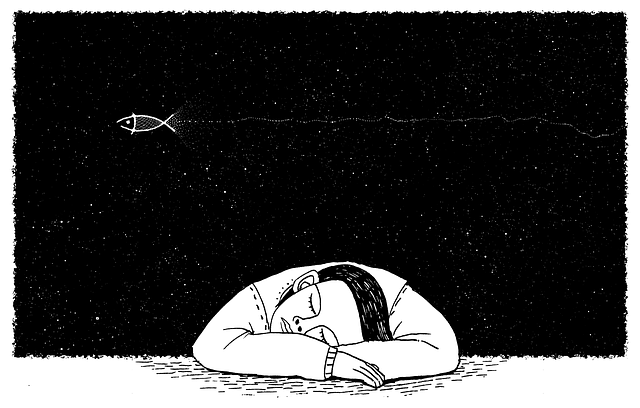You’ve probably heard your own fair share of jokes about Narcolepsy, seen movies spoofing about it, or have that one friend who’s always tired and saying they have “Narcolepsy” as a tongue and cheek excuse, yet for many, Narcolepsy is no laughing matter. The Mayo Clinic gives an overview of Narcolepsy as, “A chronic sleep disorder characterized by overwhelming daytime drowsiness and sudden attacks of sleep. People with narcolepsy often find it difficult to stay awake for long periods of time, regardless of the circumstances. Narcolepsy can cause serious disruptions in your daily routine. Sometimes, narcolepsy can be accompanied by a sudden loss of muscle tone (cataplexy), which can be triggered by a strong emotion. Narcolepsy that occurs with cataplexy is called type 1 narcolepsy. Narcolepsy that occurs without cataplexy is known as type 2 narcolepsy.” Thursday, September 22 is World Narcolepsy Day.
At first glance, people might assume that they too have narcolepsy if they are tired or sleep poorly here and there. But Narcolepsy isn’t something that just shows up after staying up too late or coming back from a long trip. Narcolepsy is a neurological disorder that affects how the brain controls your sleep-wake cycles. A person with Narcolepsy has excessive daytime sleepiness, all the time. They may also have sudden muscle weakness, hallucinations, and sleep paralysis when they are sleeping or waking. If you think you may suffer from Narcolepsy, ask for a referral to a sleep clinic, such as our own local Northern Vermont Center for Sleep Disorders in Newport at North Country Hospital.
The National Institute of Neurological Disorders and Stroke (NINDS), thinks that the 1 in 2000 people who have been diagnosed with narcolepsy is probably a lot lower than is true. Some people take over 15 years to get a proper diagnosis, which also means that many people who are living with this disorder aren’t being treated. The Narcolepsy Network estimates that only 25% of people with narcolepsy have been diagnosed and are receiving treatment. Getting to a proper diagnosis or ruling out other sleep disorders or illnesses may include a sleep history evaluation, keeping sleep records, a “sleep test,” and a multiple sleep latency test (MSLT). It’s with the use of the MSLT that many people receive their diagnosis based on how many times they fall asleep and enter REM (Rapid Eye Movement) stages. Doctors and specialists can use these tests to rule out other culprits and seek a diagnosis.
Now that we know that narcolepsy is a real chronic neurological disorder, it might be important to learn about what it isn’t! While movies make Narcolepsy seem like every person with it just drops into the group continuously, not all narcoleptics experience cataplexy, and some people with cataplexy have different triggers that cause sudden muscle weakness, like laughing or crying. You’ve likely had a full conversation with someone living with Narcolepsy and never knew. There’s a myth that Narcolepsy patients are being lazy and may even be worried others see them that way. Raman Malhotra, MD, a professor of neurology at Washington University School of Medicine in St. Louis says, “There’s a misunderstanding that people with narcolepsy are lazy or have control over their energy levels or their sleepiness. These people are capable, and they very much want to be awake and productive, and interactive, but they have this medical disorder that makes them sleepy. When they get help for that, they can do wonders.” Another myth about people with narcolepsy is that they can’t drive. If the person is being treated for narcolepsy and their symptoms are under control, with a doctor’s support it can be determined that it’s safe to drive. Yet, no one who is sleepy should be driving, that includes anyone with or without narcolepsy.
Like many other chronic conditions, there’s no cure for Narcolepsy, but those living with it can manage their illness with medication and lifestyle changes. In addition, family members, friends, partners, employers, and really anyone, can do their best to learn more about how to support someone who is living with Narcolepsy and help them to cope. People with narcolepsy are also susceptible to other sleep disorders, depression, and isolation. We are reminded this week with World Narcolepsy Day, that we can all learn more about sleep disorders and like many other chronic conditions, we may not be able to find a cure, but we can offer support. Lending a listening ear and checking in on your friends and loved ones can go a long way for someone with a chronic condition. Remember, people with Narcolepsy aren’t choosing this, no one wants to have this disorder. Sure, we all get tired and run down, but people with narcolepsy feel like this every day. There are many famous celebrities, athletes, and scholars who have had or have narcolepsy, including Kurt Cobain, Winston Churchill, Jimmy Kimmel, Thomas Edison, and even Harriet Tubman. If you have narcolepsy, be reminded of these names who changed history. You may be narcoleptic, but you are not alone!
Mary Hoadley
Director of The Wellness Center


